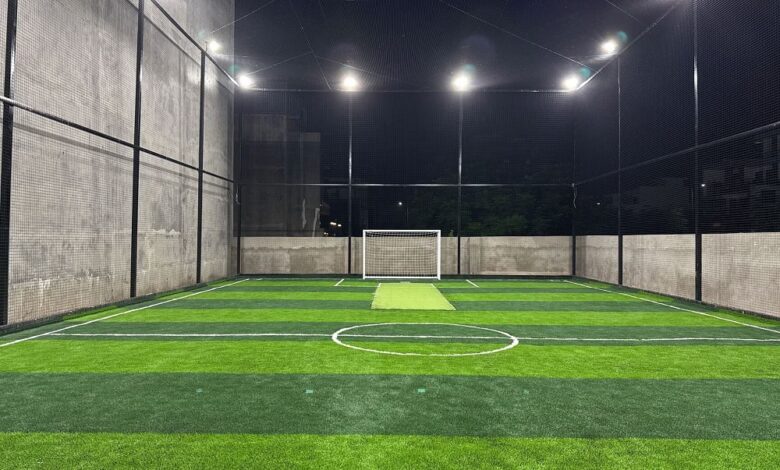Multi-Layer AstroTurf Construction Ensures Consistent Athletic Training Access

Cold-climate athletic facilities encounter persistent operational obstacles when winter weather patterns render natural grass playing areas frozen and hazardous for sports activities. The strategy increasingly embraced by sports complexes, educational establishments, and training centers involves advanced synthetic turf technology specifically developed to withstand extreme temperature conditions while providing dependable field performance throughout seasonal changes.
Athletic programs in northern territories have recognized that AstroTurf surfaces serve as fundamental infrastructure elements for organizations where conventional grass fields become inactive or entirely inaccessible during prolonged winter seasons. From professional training installations to community sports venues, these artificial playing surfaces facilitate continuous athlete development, technique advancement, and competitive programming irrespective of outdoor temperature fluctuations or weather events.
Multi-Layer Construction Withstands Temperature Variations
Professional-grade artificial turf installations feature sophisticated multi-layer construction systems engineered for coordinated performance during cold-weather exposure. The comprehensive approach ensures that backing systems and drainage layers maintain functionality even when ground temperatures drop significantly, preventing hazardous ice accumulation beneath playing surfaces.
Contemporary synthetic fibers employed in modern systems preserve flexibility superior to natural grass components during freezing conditions. While manufacturers recommend allowing frost dissolution before intensive usage to prevent potential fiber damage, these materials demonstrate remarkable resilience compared to natural grass, which becomes brittle and dangerous when exposed to freezing temperatures.
The engineered drainage capabilities prove particularly valuable during freeze-thaw cycles characteristic of northern climates. Quality synthetic turf permeability rates exceed those found in compacted natural grass installations, ensuring efficient evacuation of melting snow and ice rather than creating standing water pools that refreeze during overnight temperature drops.
Utilization Capacity Transforms Athletic Programming
Natural grass installations in cold-weather regions typically accommodate only 200-300 hours of annual usage before requiring extensive renovation procedures, while AstroTurf alternatives support over 3,000 hours without experiencing significant performance degradation. This remarkable capacity differential fundamentally alters athletic programming possibilities, particularly beneficial for territories experiencing abbreviated outdoor seasons.
Revenue generation potential expands dramatically when facilities provide consistent, schedulable playing surfaces independent of meteorological conditions. Youth athletic organizations, adult recreational programs, and specialized training academies require reliable venues that eliminate session cancellations caused by frozen or muddy field conditions. This scheduling dependability throughout the winter months creates additional income opportunities while serving community needs for continuous athletic programming.
Insurance costs often decrease, reflecting reduced liability exposure from weather-related injuries and consistent playing conditions that minimize accident risks associated with unpredictable surface characteristics common in natural grass fields during winter months.
Controlled Environment Integration Maximizes Performance
Indoor AstroTurf installations present distinct engineering requirements compared to outdoor field configurations. The controlled environment eliminates weather variables while creating different performance demands on turf systems. Facilities experience concentrated wear patterns due to smaller field dimensions and continuous usage throughout daily operations.
The absence of natural ultraviolet exposure and precipitation influences material selection protocols, with manufacturers adjusting fiber compositions and infill recommendations to accommodate specific indoor operational requirements. Manufacturing specifications for indoor applications emphasize enhanced face weights, measured in ounces per square yard, designed to withstand intensive utilization patterns characteristic of enclosed facilities.
Air quality management becomes essential in enclosed environments where synthetic turf systems must comply with indoor air quality standards. Materials selected for indoor installations minimize volatile organic compound emissions while maintaining performance characteristics that athletes expect for consistent training conditions.
Engineering Solutions Address Climate-Specific Challenges
Temperature control within indoor facilities differs from outdoor installations, as a consistent climate eliminates extreme temperature swings that outdoor surfaces must accommodate. This controlled environment allows for optimized material performance while creating different maintenance requirements for facility operators seeking maximum field utilization.
Modern AstroTurf engineering incorporates specialized fiber compositions featuring co-polymers that maintain flexibility at low temperatures while resisting brittleness experienced by earlier synthetic turf generations during freezing exposure. These technological advances combine nylon durability characteristics with polyethylene’s tactile properties, creating surfaces that perform consistently across temperature ranges.
Anti-static technology proves especially beneficial during cold, dry conditions where static electricity buildup can affect playing conditions and athlete comfort. Contemporary systems incorporate additives that reduce static generation, addressing operational concerns in multi-purpose athletic facilities serving diverse participant populations throughout extended winter periods when natural grass fields remain unusable for athletic activities.




